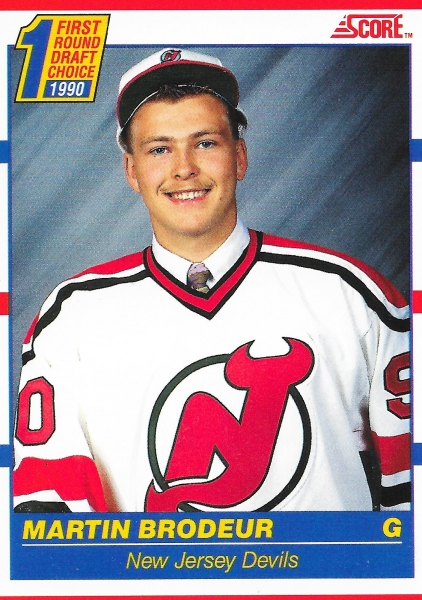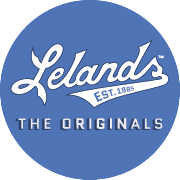1990-91 Score Hockey Cards are Plentiful, Cheap and a Little Underrated

Contents
Last month, we took a look at the inaugural Upper Deck Hockey card set, which celebrated its 30th anniversary this season.
Upper Deck was not the only new entry into the NHL hockey card market during the 1990-91 season. In fact, one set that was just as responsible for creating buzz, hype and explosive growth in hockey card collecting was the first Score Hockey card set.
Make no doubt about it. Upper Deck redefined the hockey card in 1990-91. But if Upper Deck had not appeared on the hockey landscape that year, we would be talking about how Score Hockey revolutionized hockey cards.
In fact, in some ways, they did.
Before I go any further with this, we need full disclosure. A few years after Score came out, I was hired to write their hockey card backs. After that, I was hired by Pinnacle Brands, Inc., the company that produced Score and several other brands, to be their NHL Brand Manager. We did a lot of really creative things with our hockey products during the last few years of Pinnacle, particularly with our higher end brands, but Score Hockey remained an important staple in our family of brands.
When you think of Upper Deck’s first baseball card set produced in 1989, you think of Ken Griffey Jr. When you think of 1990-91 Score Hockey, you think of Eric Lindros. Although he was not eligible for the NHL Draft until 1991, Score signed the 17-year-old to an exclusive hockey card deal. Not only did they have the only Lindros rookie cards, but they even photographed him taking batting practice in what was then SkyDome in Toronto, wearing a Blue Jays uniform, for a Score baseball card.
At the time, Lindros was anointed “The Next One”. He was coming into the NHL as a once-a-decade talent, following in the footsteps of Mario Lemeiux in the 1980s, Wayne Gretzky in the 1970s, and Bobby Orr in the 1960s. Although he was a superstar, he did not live up to the enormous expectations. He didn’t win a Stanley Cup, and his career was cut short by injuries. He was, for a while, the most dominant player in the NHL.
When the first edition of Score Hockey came out in 1990-91, Lindros was a big deal. The sports card boom was kicking into high gear, and Lindros had become the most talked about prospect since Lemieux. He was playing for the Oshawa Generals, who were packing every building they were playing in throughout the Ontario Hockey League.
Roots With Optigraphics
Score was spawned by a company called Optigraphics, which specialized in a special printing process called lenticular printing. If you remember motion or 3D printing on Kellogg’s cards produced from 1970-83, 7-Eleven Slurpee sports coins, Sportflics motion baseball cards, Cracker Jack prizes, or the DVD cover for the motion picture Independence Day, that was all done by Optigraphics.
The success of Sportflics eventually led to the creation of Score. Pinnacle Brands, Inc. was formed as the parent company of these brands in 1988. Optigraphics remained operative within the company. In 1990, Pinnacle Brands landed a hockey card license and produced 1990-91 Score as its first product.
By the time Score entered the hockey market, they had already made waves with their baseball and football card set. They had bright, bold designs with Upper Deck-level photography and full color backs. While Upper Deck went with a cropped vertical action shot and very little in the way of stats and bio information on the backs of their cards, Score had a full color head shot, stats from 1989-90 and career, and extensive bio information.


There were two versions of the Score hockey cards. The American Score set had blue borders and the card backs were in English only. The Canadian Score cards had red borders and had bilingual card backs in English and French.
While there were no insert cards in 1990-91 Score Hockey – if you weren’t around in 1990-91, inserts weren’t really a thing yet if you can wrap your head around that – there were five “bonus” cards of Eric Lindros found in the factory set.
More Than Lindros

The Lindros rookie card may be THE hockey card of 1990-91, though some would argue that the Pro Set Stanley Cup hologram is the card to have from that year. But Lindros was not the only gem in the 1990-91 Score hockey set.
Included in the 440-card set was a subset of 1990 NHL Draft picks. Included in that subset is the only 1990-91 rookie card of Martin Brodeur. There has always been a premium on goalies in the hockey card market. Say what you want about Patrick Roy, Dominik Hasek, Ken Dryden or even Terry Sawchuk. Brodeur’s resume allows him to lay claim to being the best goalie in NHL history. If you don’t think he was, it doesn’t really matter. The record book says he was.

Because 1990-91 was the dawning of the junk wax era, Brodeur and Lindros rookie cards aren’t worth hundreds of dollars. They aren’t even worth tens of dollars. The cards were mass produced, and because so many of them came out of boxed factory sets, the condition of most cards is very good.
But how can you not look at this set as one of the best rookie card checklists of all-time? In addition to the exclusive Brodeur and Lindros RCs, the set includes rookie cards of Jaromir Jagr, Mats Sundin, Sergei Makarov, Owen Nolan, Jeremy Roenick, Mark Recchi, Curtis Joseph, Mike Modano, Alexander Mogilny and dozens more.
Before long, Score Hockey evolved. Foil parallels entered the picture, and insert cards began to appear. Pinnacle released a premium brand, Pinnacle, with sharp black backgrounds and borders on the design. After that came Select, and then Zenith, and then Certified. But Score always remained one of Pinnacle’s biggest hockey sellers at an entry level price point.
As an investment, 1990-91 Score Hockey is not something to take a look at. But for the serious collector, it’s a fantastic set to have in sheets and in a binder as part of a collection. The set is loaded with Hall of Famers, and includes the only rookie cards of two legendary players. The 1990-91 rookie card class is one of the best in the history of hockey card collecting, with rookie cards of four players who went on to win the Calder Trophy…all for just a few bucks.
It’s production and price may scream junk wax, but the set, like the 1990-91 Upper Deck Hockey set, is a great addition to a collection for someone who loves hockey cards and can appreciate it for what it is instead of what it is, or isn’t, worth.





